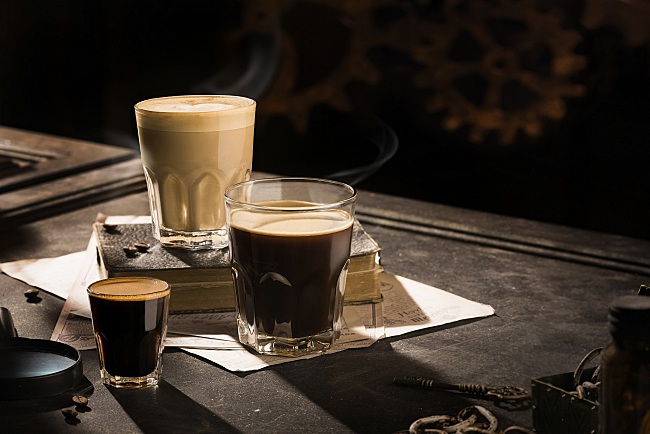How to Store SOE Single Origin Espresso for Maximum Freshness
How to Store SOE Single Origin Espresso for Maximum Freshness
Blog Article
Recognizing Coffee Beans: the Journey From Coffee to Blended Coffee Beans

The Origins of Coffee: An International Point Of View
While you might think of coffee as a modern-day staple, its origins trace back centuries, linking with societies throughout the globe. The story starts in Ethiopia, where tale says a goat herdsman called Kaldi found the invigorating effects of coffee beans after observing his goats romping energetically after consuming them.
As trade routes broadened, coffee made its method to Europe in the 17th century, quickly acquiring popularity. Each culture added its special spin to coffee preparation, enriching its history.
Cultivation and Harvesting of Espresso Beans
As coffee's journey progressed, the emphasis changed to the farming and harvesting of details bean selections, specifically those used for espresso. You'll find that espresso beans typically originate from Arabica or Robusta plants, each offering unique tastes. The perfect growing conditions consist of high elevations and abundant, well-drained dirt, which boost the beans' quality.
Throughout the harvest, choosing methods differ. Timing is crucial; you want to collect when the cherries get to peak ripeness for maximum taste.
Once harvested, the beans are prepared for handling, which is vital in identifying their final preference. Comprehending the cultivation and harvesting procedures provides you understanding into what goes into your favored espresso, enriching your admiration for every mug.
Handling Methods: From Cherry to Bean
Since you've learnt more about harvesting coffee beans, let's discover exactly how those cherries transform into the coffee beans you enjoy. You'll see exactly how various harvesting strategies effect taste, followed by the essential actions of fermentation and drying out. Ultimately, we'll break down the milling and grading procedure that determines your coffee's high quality.
Harvesting Strategies Discussed
When it comes to coffee, understanding harvesting methods is necessary, given that they straight influence the taste and top quality of the beans you appreciate. Discerning picking involves hand-picking only ripe cherries, ensuring you obtain the ideal top quality beans. Inevitably, the selection of collecting strategy can substantially affect your coffee experience, so it's worth understanding just how those beans made it to your mug.
Fermentation and Drying
After harvesting, the next action in handling coffee beans play a substantial duty fit their flavor. You'll find that fermentation is vital, as it aids damage down the mucilage bordering the beans, improving their taste profile. Relying on the technique, this procedure can last from a couple of hours to a number of days, with differing outcomes based on temperature and humidity.
Sun-drying permits the beans to soak up flavors from the atmosphere, while mechanical drying warranties constant moisture degrees no matter of weather condition. Proper drying is necessary to avoid mold and mildew and preserve the beans' top quality, ultimately affecting your cup of coffee.
Milling and Grading Refine
As fermentation and drying established the phase for flavor development, the milling and grading process assurances that just the ideal coffee beans make it to your cup. This stage includes getting rid of the external layers of the coffee cherry, consisting of the parchment and husk. High-quality beans receive a higher quality, resulting in a richer coffee experience.
Toasting Methods: Opening Flavor Prospective
When you roast coffee beans, the approach you choose can considerably affect the taste profile. Comprehending the partnership in between time, temperature level, and toasting methods is crucial to exposing the capacity of your brew. Allow's explore just how these components integrated to develop the best mug.
Roasting Methods Discussed
While you may think that all coffee roasting methods generate the exact same results, the fact is that each method reveals unique taste capacities in the beans. Drum roasting makes use of a revolving drum to equally disperse warm, improving caramelization and creating a balanced taste. Air roasting, on the various other hand, circulates warm air around the beans, advertising a lighter roast with pronounced level of acidity.

Influence On Taste Account
Different toasting methods not just influence the procedure yet additionally considerably impact the flavor account of the coffee beans. Dark roasts, click now on the other hand, bring out vibrant, smoky tastes, sometimes concealing the bean's one-of-a-kind qualities. Comprehending these nuances assists you value the artistry behind your mug of coffee, enhancing your general experience with every sip.
Time and Temperature Variables
To release the complete flavor possibility of coffee beans, both time and temperature level during the toasting procedure play substantial functions. When roasting, you'll discover that greater temperatures can swiftly create tastes, yet if you rush it, you might wind up with scorched notes. Alternatively, reduced temperature levels permit for an extra progressive flavor development, showcasing the beans' one-of-a-kind features.

Timing is equally as vital; prolonging the roast too long can bring about a loss of acidity and illumination, while too short a roast may leave the beans underdeveloped. Finding that pleasant spot calls for practice and trial and error. By changing these factors, you can expose the abundant, complex tastes hidden within each bean, developing a truly impressive coffee experience.
The Art of Blending: Crafting One-of-a-kind Coffee Profiles

Beginning by selecting a base coffee that supplies a solid structure. A brilliant Ethiopian bean can bring fruitiness, while an abundant Brazilian coffee adds body.
As you mix, bear in mind that each mix narrates. You're not simply making coffee; you're producing an experience. So, take your time, taste often, and appreciate the trip of finding your signature mix.
Brewing Methods: Just How Prep Work Influences Taste
Mixing coffee opens a domain name of taste opportunities, however exactly how you brew that blend can significantly affect your last mug. Various brewing methods remove one-of-a-kind tastes and fragrances, so it's crucial to pick intelligently. For example, a French press permits debris and oils to continue to be, producing an abundant, robust experience. On the various other hand, a pour-over highlights the coffee's clarity and brightness, ideal for showcasing fragile notes.
Coffee, see here with its high pressure, creates a concentrated shot that accentuates sweetness and crema. If you choose a lighter brew, consider a cold mixture technique; it generates a smooth, less acidic taste.
Readjusting variables like water temperature level, grind dimension, and brew time can transform your coffee's account. Embrace the art of brewing to uncover the flavors hidden in your coffee blends.
The Future of Coffee: Sustainability and Technology
As the coffee industry progresses, sustainability and innovation are ending up being crucial for attending to environmental difficulties and conference customer demands. You'll discover that even more coffee firms are taking on environment-friendly techniques, from sourcing beans ethically to executing lasting farming methods. These changes not just aid the planet but likewise improve the top quality of the coffee you enjoy.
You may see technologies like biodegradable packaging and water-saving developing techniques that lower waste. Advanced technology, such as blockchain, is also becoming popular, guaranteeing transparency in the supply chain, which enables you to trace your coffee back to its origins.
Additionally, purchasing neighborhood communities and supporting farmers with fair trade initiatives promotes a much more sustainable coffee community. As you sip your next cup, keep in mind that your choices can contribute to a brighter future for coffee. By choosing sustainable brand names, you're not simply taking pleasure in a drink; you're making a favorable effect on the world.
Frequently Asked Questions
What Is the Distinction Between Arabica and Robusta Beans?
Arabica beans are smoother, sweeter, and have a higher acidity, while robusta beans are stronger, more bitter, and contain more high levels of caffeine. When brewing your coffee., you'll discover these differences in taste and fragrance.
Exactly How Does Elevation Affect Coffee Bean Flavor?
Elevation effects coffee bean flavor substantially. Greater elevations create beans with brighter acidity and complicated flavors, while reduced elevations typically generate beans that are much heavier and much less nuanced. You'll observe these distinctions in your cup!
What Are the Wellness Perks of Alcohol Consumption Coffee?
Consuming coffee can boost your energy, boost mental emphasis, and also improve physical efficiency. It's rich in antioxidants, might lower the danger of certain illness, and can promote a much healthier metabolic process when eaten in moderation.
Can Coffee Beans Be Reused for Developing?
Yes, you can recycle coffee beans for brewing, however the taste might be weaker. If you take pleasure in experimenting, try recycling them in various ways, like chilly mixtures or including to healthy smoothies for an added kick.
Just how Should I Store Coffee Beans for Quality?
To maintain your coffee beans fresh, store them in an airtight container in a great, dark place. Avoid subjecting them to light, wetness, or warmth, as these variables can rapidly deteriorate their flavor and scent.
Understanding Coffee Beans: the Journey From Espresso to Blended Coffee Beans.
Currently that you have actually found out about gathering coffee beans, let's explore i loved this exactly how those cherries change right into the coffee beans you love.When you roast coffee beans, the approach you pick can significantly affect the flavor profile - Single Origin Espresso.While you may believe that all coffee roasting techniques produce the exact same outcomes, the fact is that each method exposes special flavor capacities in the beans.Various roasting techniques not only influence the process but also significantly impact the flavor profile of the coffee beans
Report this page